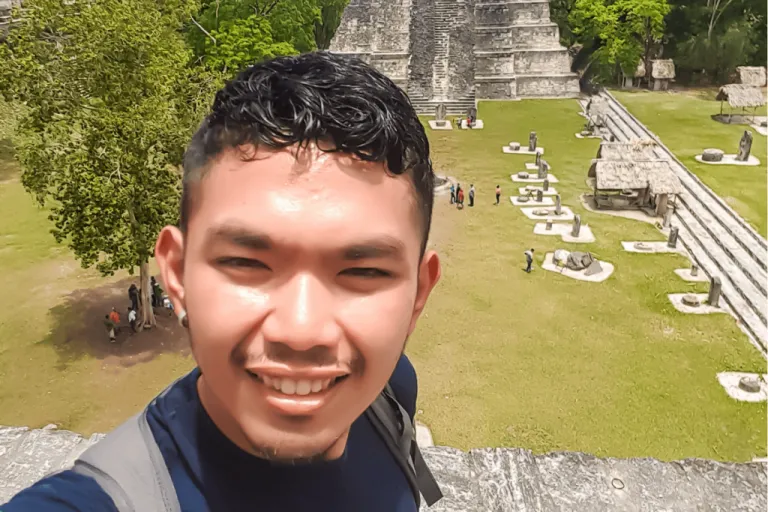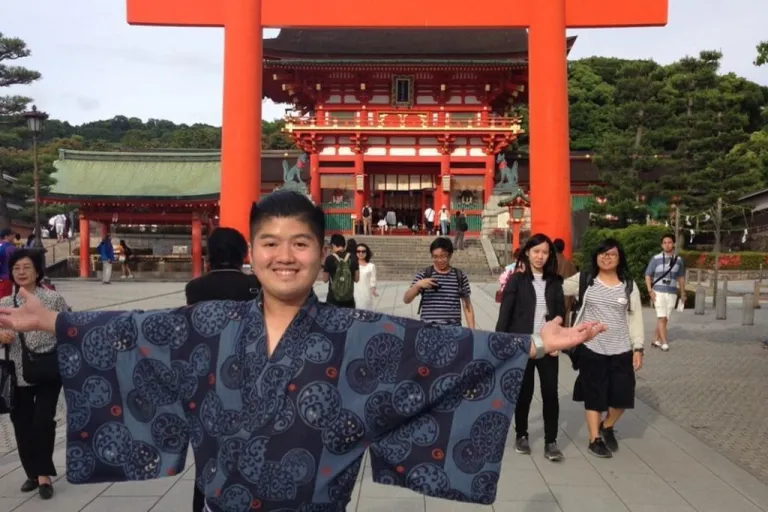Our favourite places to stay on this sleepy Cebu island.
Becoming Multilingual? Filipino Polyglots Recommend These Languages

Ask any multilingual about what the easiest or best languages to learn for Filipinos are, and you’d most probably be told that there aren’t any. Or, that it would simply take them a long time to decide. Why? Because learning a new language doesn’t just rest on how easy it is, but a multitude of other factors which often boil down to what your purpose for doing it is, as many of them had pointed out.
Motivations aside, however, there are languages that are easier to study, speak, or understand because of how closely related they are to the vernaculars we grew up with. Some languages are also more enjoyable to learn because they involve a certain form of art. Nonetheless, if your sole purpose is to learn languages as a hobby or to expand your horizons, then knowing what the best languages to learn are will prove to be most useful.
To this, Mark Ong, an anthropology student and Filipino polyglot who I recently had a chance to discuss the subject with, recommends first learning those that are closer to our culture. “Language learning is not just about learning another culture, but it’s also about learning about your own. Therefore, I highly recommend my fellow Filipinos to start with the foreign languages whose words we have adopted throughout our history.”
Also read: Pinoy Polyglots and Linguaphiles on How to Learn a New Language
Best languages to learn for Filipinos
One of several Filipino polyglots I spoke with, he listed down his language recommendations for beginners. Along with him are Mike Lewis, Peer Kortejan, and Yrwin Ty. Combining their insights, I’ve compiled this list of the best languages to learn for Filipinos.
Ilocano
Ilocano is the largest language in the Philippines next to Tagalog, English, and Bisaya. Although primarily spoken in Central and Northern Luzon, it’s also widely used in Mindanao and the United States, particularly Hawaii and California. Not to mention, Ilocano and Korean practically share the same diction, which will make it easier for you to adapt a Korean accent should you decide to learn it later on.

“I had learned a bit of Ilocano prior to a fieldwork in Vigan, and what little knowledge I had acquired helped me a lot in my research and allowed me to appreciate our cultural heritage and diversity even more,” Mark said. Although the challenge lies in finding reliable teachers and textbooks to teach grammar and other technical aspects, he managed to find support in local Ilocano speakers.
“[Native speakers] are extremely helpful in determining which words or expressions sound natural or not, despite not being totally grammatically correct at times,” Mark added. ”Other than that, they helped me a lot in not sounding like a walking textbook.” These facts alone make Ilocano one of the most useful and versatile Philippine and Austronesian languages to study for Filipinos.
Spanish
This may not come as a surprise considering how far back our history with the Spaniards goes. That being said, Spanish is perhaps the easiest path to take when starting your language learning journey. “Even though we had a rough period under Spanish colonisation, we still maintain a distinctive Hispanic heritage ever since our independence,” Mark said. “And this is reflected in our vocabulary, our customs and traditions, and even our mannerisms.”

“Tagalog already has 25% of loan words in Spanish, so once you master it, you can then easily transition to other Romance Languages such as Portuguese or French,” shared Mike, who has been travelling Spanish-speaking countries after taking up a Spanish class in college. While you can also readily take a Spanish elective in university, there are hundreds to thousands of other resources that you can rely on as well.
Learning on your own? Mike highly recommends listening to Spanish songs and watching undubbed Spanish movies. And, like him, if you feel like enhancing your proficiency even more, you can enroll in one of many reputable language centres in Metro Manila (or wherever you’re from). In time, not only will you understand our past better by knowing Spanish, but it will also help you engage with millions of other Spanish-speaking nationalities globally.
Japanese
“I recommend Japanese or Nihongo because it is a good introductory language if you want to study Asian languages,” said Peer, a 20-year-old Manila student who started studying the language in 2017. According to him, the well-roundedness of the Japanese language also makes learning it in itself an art form. “Japanese has unique writing systems (Hiragana and Katakana) which are easy to learn. Japanese also features Kanji (Chinese writing system), which can also further your interest in language learning.”

In that context, learning Japanese may be a bit more challenging, but the benefits make it worth it. This has been true for Yrwin, a traveller who speaks seven languages. “The Japanese language is extremely difficult mentally, but learn to master a decent or speaking level, and you’d be surprised at how rewarding it can be.”
For him, learning the language will allow you to interact with the Japanese more effectively. Known for their courteousness, they tend to think very highly of visitors who make an effort to embrace their culture. “Throughout all my travels to Japan by myself, I have been able to make friends that I consider as family now,” he said. “I have been able to access many difficult to reach areas in Japan as well as try out different kinds of local food because I was able to connect with the people there!”
Other languages worth learning for beginners
Taking into account their practicality, there are other languages that are likewise seen as the best languages to learn for Filipinos. Learning Mandarin Chinese and Arabic, for example — which are two of the most widely spoken languages in the world — will present a plethora of work opportunities abroad. Specifically, in high-paying countries like Singapore, Taiwan, and the United Arab Emirates.

In the same way as with the Spanish language, Filipinos have long been exposed to Hokkien Chinese because of the substantial Chinese influence in our culture. As you may already know, a number of Tagalog words even originated from this particular Chinese language. With Filipino-Chinese making up a large percentage of our population, finding fluent speakers to practise it with will also be easier.
Locally, you will find that learning Cebuano also has its benefits for young learners. Aside from the fulfilment in having knowledge of other Philippine languages, speaking Cebuano will allow you to connect with locals throughout Cebu, a major educational, professional, and tourism hub in Visayas. Or, in other Cebuano-speaking destinations like Bohol, Negros Island, as well as some parts of Leyte and Samar.
Also read: How Learning Languages Changed Everything for These Filipino Polyglots
Get started on your language learning journey
Going back to my first few sentences, while establishing a comprehensive list of the best languages to learn poses a seemingly impractical task, knowing which ones to prioritise might help make your language learning journey more manageable.
And, if at first you feel discouraged, look back to the fact that we already have it in us to adapt to diverse cultures. “Personally, I think Filipinos are still generally unaware of just how immensely and innately multicultural we really are,” Mark further emphasised. “And I believe that the more we understand that, the easier it is for us to learn absolutely any other language.”
Note: This is the last of a three-part article series on Filipino polyglots, their journeys, and language learning tips. Follow TripZilla Philippines to read our other articles on learning languages for Filipinos!
Featured image credit: Billy Pasco | Unsplash
Published at
About Author
Joser Ferreras
Subscribe our Newsletter
Get our weekly tips and travel news!
Recommended Articles
10 Bantayan Island Resorts, Hotels, and Rentals for Your Tropical Escape 10 Best Banawe Restaurants for a Mouthwatering Food Trip in QC The promise of new flavours beckons from Banawe.
10 Best Mountain Cafes in the Philippines for Your Peak Coffee Experience Coffee date on the mountains, anyone?
10 Commandments for Responsible Travel Flexing Spread the good word!
10 Fairytale Castles In Europe Filipinos Need To See! Permission to feel like royalty even for a day?!
Latest Articles
Dingalan Travel Guide: Nature Spots to Discover Now Underrated coastal gem in Aurora
What to Eat in Bicol: Iconic Dishes and Treats, and Unique Pasalubong You’ll Love Spice up your foodie adventure with iconic Bicol dishes and must-try pasalubong!
Top Travel Trends in the Philippines for 2025 New spots, tips, and trends
New UK Adventure Park to Visit in Devon and Cornwall Fun countryside escape near London
Ultimate Camarines Norte Travel Guide: Waterfalls, Beaches, and More From surfing to secret waterfalls, Camarines Norte is your next escape!

